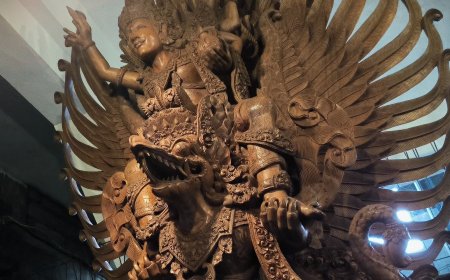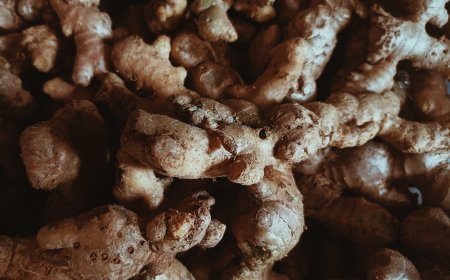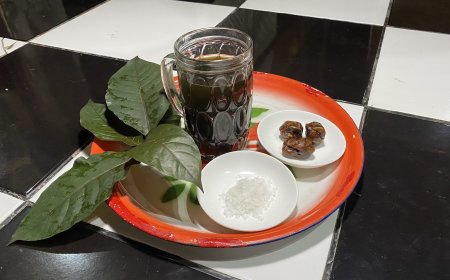The Secret Wealth of Candlenut : Its Oil-Rich Seeds Reveal Its Multiple Benefits
Candlenut, also known by the Balinese as "tingkih", is a plant whose oil-rich seeds are often used in Southeast Asian cuisine. Candlenut oil is often used as a base in various sauces and traditional dishes. It also has benefits in traditional medicine and beauty treatments due to its nutritional content and beneficial fats.
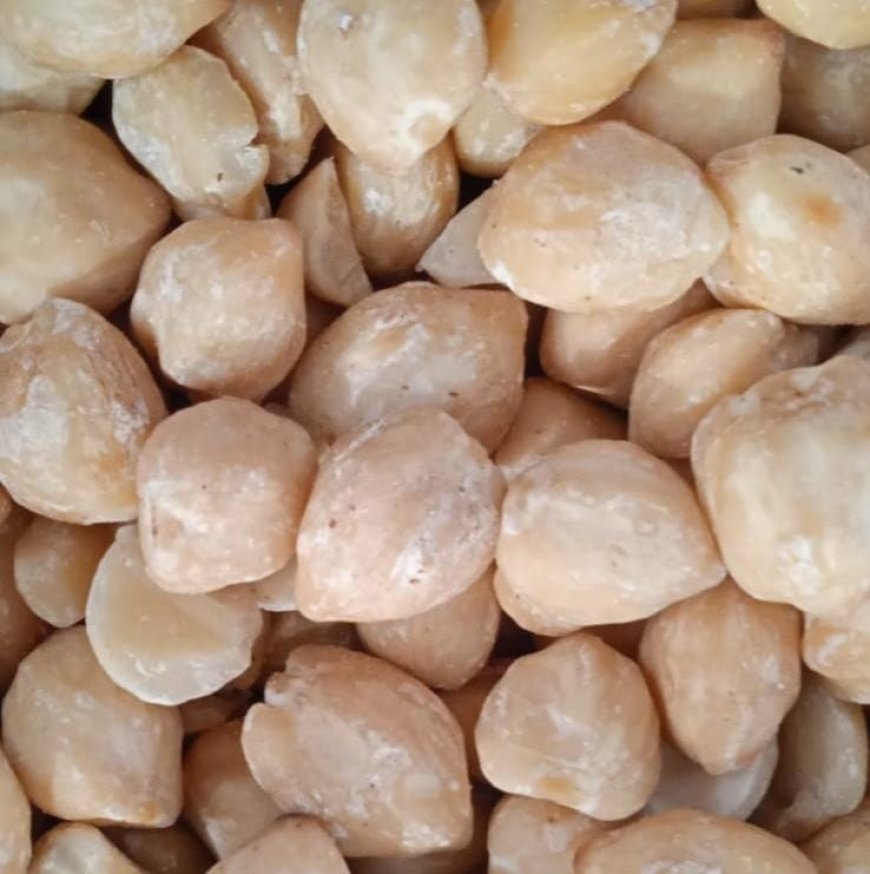
Lontar Usada is a classic text that covers various treatment methods for different types of diseases. The text is written on palm leaves using the Balinese language, so it is often referred to as Lontar Usada Bali. There are various versions of Lontar Usada according to the type of disease and treatment method.
Candlenuts are discussed in many usadha, one of which is in Usada kuranta bolong which is a set of knowledge about traditional Balinese treatment and healing of Rare children's illnesses by using plants that are typically medicinal. (Zoetmulder 1994:513), (Nyoka, 1981:1). Treatment is carried out thoroughly by a pengusada in accordance with traditional medicine guidelines, using a mixture of medicinal herbs made from various types of plants and other ingredients.
According to Usada Kuranta Bolong, candlenut is one of the ingredients used to treat boils in infants. In the medical world, boils in infants are called atopic dermatitis where the cause of this disease is due to the environment and is related to allergic reactions. The child's skin becomes dry itchy reddish pustules and filled with liquid after scratching the skin gets redder and bigger then it will scar like a scab.
Tamba bedas. Sarana : patraning karemere, bawang bang, adas, sembar ikang waneh, sarana : cabe bun, uyah, pipis tampel akene
In Usada Kuranta Bolong, it is also explained that the cure for spicy babies (boils) is the ingredients: candlenut tree bark, onion liver, fennel, sprayed on the swelling, then for the next chili bun, salt, crushed and then attached.
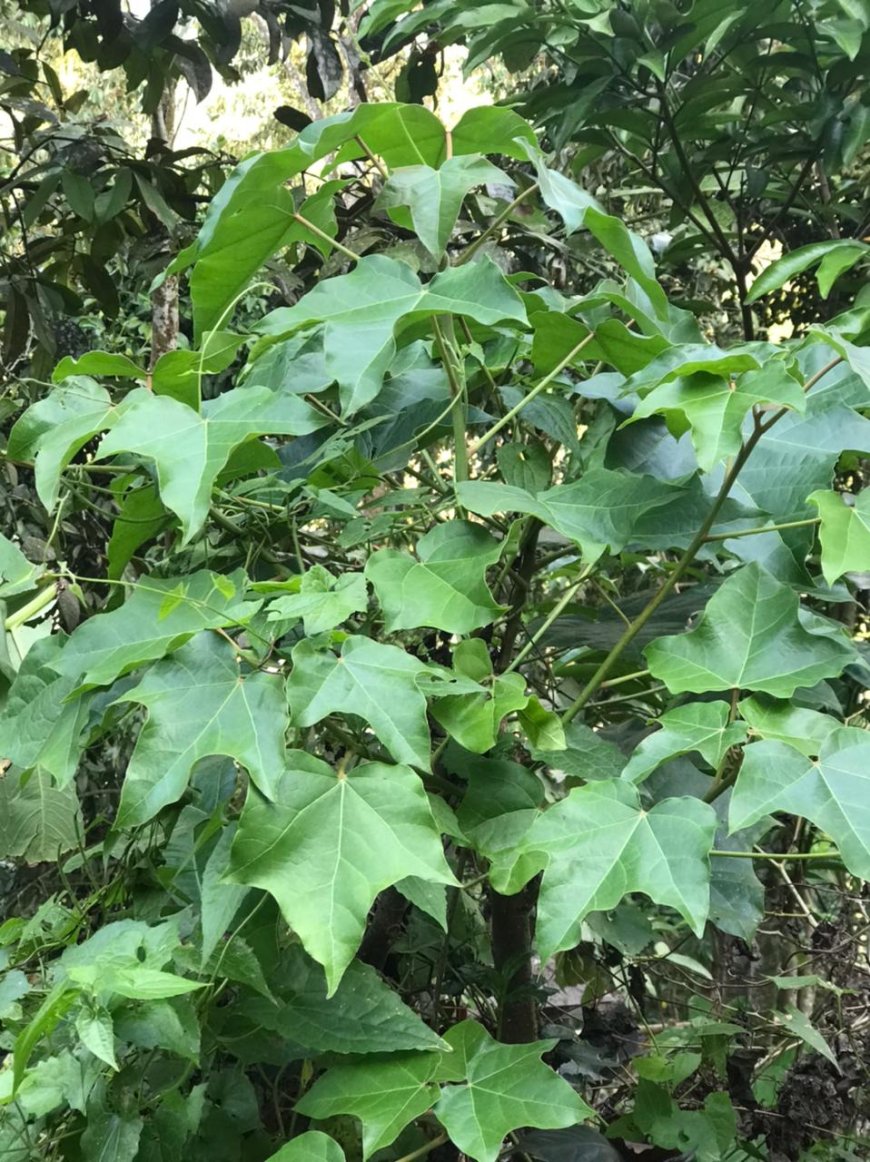
Candlenut Leaves (Photo Source : Private Collection)
Candlenut, or "Aleurites moluccanus", is a common kitchen ingredient and is not difficult to find in many parts of Southeast Asia, especially in Indonesia. Candlenut plants thrive in the tropics, and the trees are often found in household gardens, plantations, and rural areas. Ready-to-process shelled candlenuts have a fairly high vegetable oil content, which is around 55% to 65%. In addition, in 100 grams of hazelnut seeds, there are also 19 grams of protein, 63 grams of fat, 8 grams of carbohydrates, 80 mg of calcium, 200 mg of phosphorus, 2 mg of iron, 0.06 grams of vitamin B, and 7 grams of water.Hazelnut fruits, which contain seeds rich in oil, can usually be found in traditional markets and supermarkets. In addition, hazelnut oil and hazelnut paste are also available in ready-to-use packaging in various grocery stores and pharmacies. Its widespread presence and easy availability make candlenut one of the essential ingredients in various traditional dishes in the region, and it is also used in various beauty care products and traditional medicine.
The hazelnut plant has some distinctive characteristics that set it apart. The candlenut tree is an evergreen leafy plant with an upright tree trunk and can grow quite tall, reaching a height of about 15 to 20 meters. The leaves are dense and crossed, having blunt tips and toothed edges. Candlenut fruits are round, measuring about 3-4 cm in diameter, with hard skin and green in color when immature, then turning brown or black when ripe. Inside the pecan fruit are oil-filled seeds that are rich in fat and have a hard texture.
One of the most striking characteristics of the hazelnut plant is its seeds, which are used in various dishes. Candlenut seeds are usually white or light brown in color, and once processed, they yield an oil that is used as a base in many traditional dishes in Southeast Asia. Candlenut oil has a strong characteristic aroma and a distinctive taste, giving dishes a distinctive flavor. In addition, the hazelnut plant also has value in traditional medicine and skin and hair care due to its nutritional properties and beneficial fats.
Candlenut seeds are a natural oil treasure contained in the seeds of the Aleurites moluccanus plant. Each seed contains about 55% to 65% vegetable oil. These oils can be extracted by various methods, including pressing or solvent extraction, and the result is the highly prized hazelnut oil. This hazelnut oil has a wide array of benefits that make it an important ingredient in various fields. One of the most recognized benefits is for hair care.
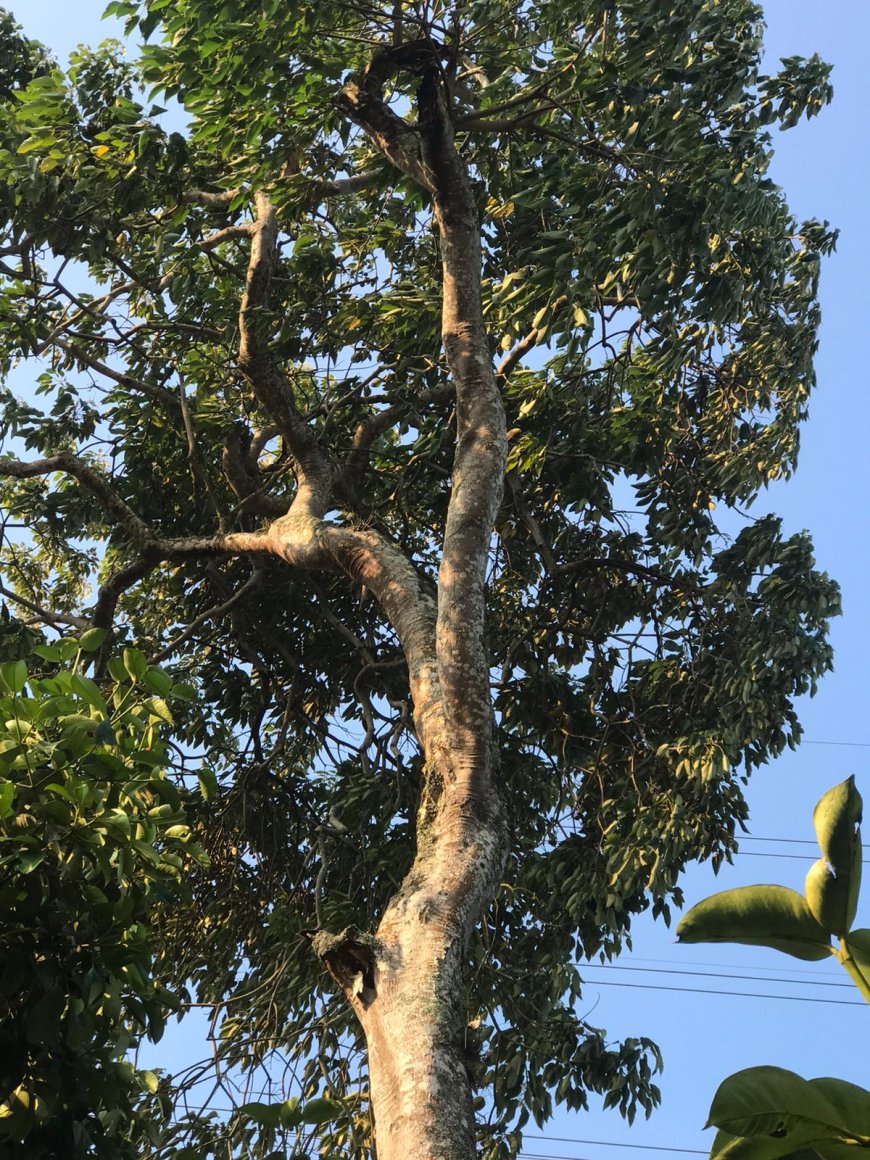
Candlenut Tree (Photo Source : Private Collection)
The process of making hazelnut oil starts with the collection of ripe hazelnut seeds. These seeds are then cleaned and dried to remove excessive moisture. Once the seeds are dried, they are mashed or crushed into a coarse paste or powder form. Next, this hazelnut paste or powder is usually heated and extracted using pressing or dissolving methods with certain solvents such as hexane. This extraction process separates the oil from the seeds and produces pure hazelnut oil. The extracted hazelnut oil can be filtered to remove any residue or coarse particles, and then stored in an airtight container to maintain its quality. This process yields hazelnut oil that is ready to be used for a variety of applications, including hair care, cooking, and skincare products.
Hazelnut oil has long been used to treat and maintain hair fertility. The healthy fats in this oil help moisturize the hair and scalp, prevent dryness, and provide essential nutrients needed by the hair roots. In addition, hazelnut oil can also help treat hair problems such as dandruff and dull hair. By applying it to the hair and scalp regularly, hazelnut oil can help strengthen hair strands, prevent loss, and make hair shinier and healthier overall. Thus, hazelnut seeds are a wonderful natural resource for maintaining healthy and beautiful hair.
In the usadha tiwang, candlenuts are mentioned as one of the ingredients used to treat several "tiwang". Namely tiwang pamali papasanan, characterized by symptoms of back pain like being stabbed, can be treated with a combination of candlenuts, pule leaves and babakan, temu tis, sepet-sepet, burnt coconut, and fennel which are processed by mashing and then spread on the part that feels pain.
Then tingkih can also treat tiwang gurita. Tiwang is characterized by symptoms of stiffness of the entire arm and leg, the hand feels gripping like an octopus. Octopus tiwang can be treated with a combination of tingkih, yellow madori leaves, kesuna, jangu, mesui, trikatuka which are mashed and then spread on the part that feels gripping.
Apart from tiwang pamali papasanan and tiwang gurita, tingkih can also be used as a medicine to treat tiwang bebai. This tiwang is characterized by symptoms of cramping in the stomach area, and the part below the stomach feels painful as if it is being pulled. Tingkih combined with kapkap, temu tis, and burnt coconut combined and then spread on the area that feels cramped can overcome this tiwang bebai.
Apart from being useful in cooking and traditional medicine, tingkih can also be used in writing or writing lontar. Nyurat lontar is one of the traditions of writing on palm leaves from generation to generation of Balinese people who have been passed down since time immemorial. The function of tingkih here is to blacken the writing that has been made using pengutik on the palm leaves. The tingkih used is tingkih that has been burned so that it is "puun" or burnt. Then it is smeared over the writing that has been made.





































